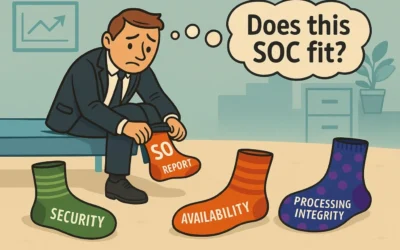Over the past 20-years, I’ve used every major vulnerability scanner. There are several great scanners on the market, and SynerComm has continually used one of them from its free GNU public license years (pre-Oct. 2005), to its current version today. As the tactics, techniques, and procedures (TTP) of cyber-criminals evolved, our testing methodologies also adapted to meet the latest threats. What was possibly the only tool in most tool-kits 20 years ago, is now just one of many.
By today’s standards, running and reviewing a daily or weekly vulnerability scan should be the minimal starting point for basic perimeter security. Even though scanners continually add checks for new threats, they can’t check for everything. In fact, they often miss the most critical vulnerabilities and give security personnel a false sense of security.
The Limitations of Vulnerability Scanning
Vulnerability scanning is undoubtedly a valuable tool for identifying known vulnerabilities within an organization’s network and systems. The key word being “known”. Scanning involves the automated detection of weaknesses such as outdated software, misconfigurations, and unpatched systems through the use of special network probes. As useful as vulnerability scanning is, it’s essential to recognize its limitations.
1. Vulnerability Scanning Can Only Identify Known Vulnerabilities
Vulnerability scanning tools rely on databases of known vulnerabilities to identify weaknesses within an organization’s network and systems. While effective at detecting vulnerabilities with published patches or fixes, these tools can’t identify zero-day vulnerabilities or emerging threats that have not yet been documented. This limitation leaves organizations vulnerable to attacks exploiting unknown weaknesses, as vulnerability scanners lack the capability to predict or detect novel attack vectors.
2. Vulnerability Scanning is Ineffective for Custom Applications
Many organizations rely on custom-built/proprietary applications and APIs to support their business operations. These applications contain unique features and functionalities that vulnerability scanning tools may not fully understand or be able to assess accurately. As a result, vulnerabilities specific to custom applications, such as logic flaws or poor input sanitization, will likely go undetected by vulnerability scanners.
3. Vulnerability Scanning is Unable to Detect Weak Passwords and Multi-factor Authentication (MFA)
Weak passwords and lacking multi-factor authentication (MFA) both represent significant security risks for organizations. In fact, when combined it really doesn’t get much worse. Many scanners provide an option to test blank or default passwords, but none will find users with weak passwords or validate that MFA is properly configured. Consequently, weak authentication mechanisms remain one of the most exploited vulnerabilities, despite being so well-known.
4. Vulnerability Scanning Only Scans Known Assets
Vulnerability scanning tools operate within the confines of the targets or assets specified by the organization, scanning only the systems and networks explicitly designated for evaluation. Scanners lack the ability to discover previously unknown assets or identify shadow IT resources that may exist outside the organization’s visibility. This limitation leaves organizations vulnerable to unmonitored or unmanaged assets that could serve as potential entry points for attackers, bypassing the organization’s perimeter defenses undetected.
5. Vulnerability Scanners Lack Contextual Understanding
Vulnerability scanning tools provide a snapshot of the security posture at a specific point in time, but they lack the contextual understanding necessary to assess the exploitability or potential impact of the identified vulnerabilities. They may also generate false positives which leads to alert fatigue and diverting resources away from genuine threats. Without human intervention to validate and prioritize vulnerabilities based on their relevance and potential impact on business operations, organizations risk overlooking critical security flaws.
6. Vulnerability Scanners are Unable to Mimic Real-World Attack Scenarios
Vulnerability scanning tools often rely on banners and other disclosures to identify software versions so they can be compared to a vulnerability database. Even when a scanner uses an exploit to check for a vulnerability, it still lacks the capability to mimic the sophisticated tactics and techniques employed by real-world attackers. On the other hand, penetration testing emulates actual cyber-attacks to assess the effectiveness of security controls and incident response procedures. Vulnerability scanning tools can only provide limited insights into how attackers might identify and exploit vulnerabilities.
While vulnerability scanning serves a crucial cybersecurity function, it’s far from being comprehensive or sufficient on its own. Perimeter vulnerability management has evolved into what Gartner describes as External Attack Surface Management (EASM), and the traditional vulnerability scanner should now be part of broader more encompassing platforms. Automated asset discovery, continuous vulnerability scanning, web service and API testing, and penetration testing should all be considered in a modern perimeter security strategy.
The Role of Penetration Testing
Penetration testing, also known as ethical hacking, goes beyond vulnerability scanning by simulating real-world cyber attacks to assess the resilience of an organization’s defenses. Unlike vulnerability scanning, which only focuses on identifying weaknesses, penetration testing also evaluates the exploitability of vulnerabilities and the effectiveness of security controls in place. This includes testing for vulnerabilities that scanners are not programmed for or able to detect.
By emulating the tactics and techniques employed by malicious actors, penetration testers uncover vulnerabilities that may not be detected by automated scanning tools. They assess the entire attack surface, including network infrastructure, applications, and human factors, to identify potential entry points and security gaps.
Moreover, penetration testing provides valuable insights into the impact of successful attacks, helping organizations prioritize remediation efforts based on the severity and potential consequences of identified vulnerabilities. It also enables organizations to test incident response procedures and evaluate the effectiveness of security controls in mitigating or containing breaches. A modern example is that penetration testing is an excellent measure of an organization’s susceptibility to ransomware while vulnerability scanning provides very few useful insights.
The Importance of Application Assessments and Code Reviews
In addition to infrastructure vulnerabilities, applications represent a significant attack vector for cybercriminals. Application assessments and code reviews play a vital role in identifying security flaws and weaknesses within custom-coded or third-party developed applications.
Application assessments involve analyzing the security architecture, design, and implementation of web and mobile applications to identify vulnerabilities such as injection flaws, authentication bypasses, and sensitive data exposures. Dynamic application testing refers to testing a live running application in an environment similar or identical to it’s intended production use. Dynamic assessments not only test for and verify the presence of vulnerabilities, but they also attempt to bypass protective controls. Code reviews allow the assessor to examine the source code to uncover logic errors, backdoors, and other vulnerabilities that may not be apparent through dynamic testing alone. Code reviews also allow the pentester to show developers exactly where and why vulnerabilities exist.
By conducting application assessments and code reviews, organizations can identify and remediate vulnerabilities early in the development lifecycle, reducing the risk of deploying insecure applications into production environments. This proactive approach helps organizations build robust and resilient applications that withstand potential attacks.
The Role of External Attack Surface Management (EASM)
Organizations have expanded their networks and systems well beyond traditional perimeter boundaries. Today’s external assets include cloud services, third-party SaaS, and digital assets hosted by external providers. External attack surface management tools help organizations gain visibility into their entire attack surface and identify potential security risks stemming from previously unknown exposures.
EASM platforms combine dozens of techniques such as passive reconnaissance, digital footprinting, vulnerability scanning, and most importantly, asset discovery. EASM is designed to discover and map out an organization’s entire external-facing infrastructure and assets. By monitoring changes to the attack surface and identifying misconfigurations or vulnerabilities, these tools enable organizations to proactively defend against external threats and prevent unauthorized access to sensitive data or systems.
Conclusion
While vulnerability scanning serves as a foundational element of cybersecurity, it is insufficient on its own and can’t provide comprehensive perimeter vulnerability detection. Adversaries are continuously evolving their tactics and targeting organizations with increasing sophistication. Additional measures such as penetration testing, application assessments and code reviews, and external attack surface management are all essential tools for bolstering defenses and preventing breaches.
By adopting a holistic approach to cybersecurity that combines automated scanning tools with human expertise and specialized assessments, organizations can strengthen their resilience to cyber threats and mitigate the risk of costly data breaches and disruptions to business operations. In a world where the stakes have never been higher, investing in proactive security measures is not just a choice but a necessity for business survival.


